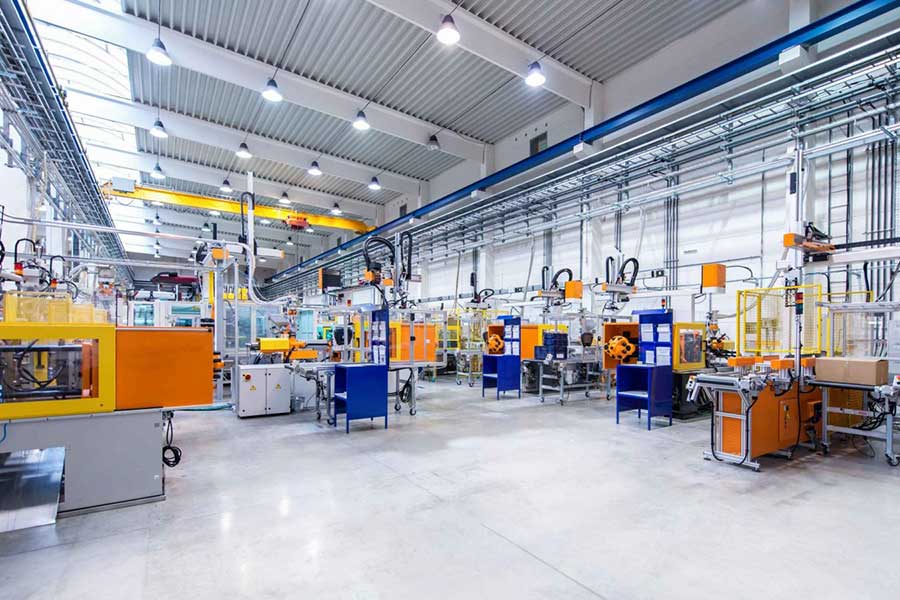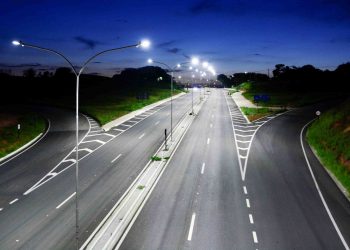
Learn more about industrial lighting structure!
The quality of the lighting structure in the industry is essential for productivity. Without good light transmission, everyday work tasks are compromised by poor visibility or natural discomfort of employees.
However, these are not the only disadvantages of not paying attention to industrial lighting. Without quality luminaires, the entire company may be subject to various obstacles with legislation, work accidents, improper operation of machinery and equipment, and even health problems.
The lighting system is a crucial aspect for the sector, and the implementation of a complete engineering project is necessary to avoid problems in the short, medium, and long term.
In this article, we will talk about how a well-suited lighting structure can optimize maintenance needs and provide considerable benefits for the company. Follow along.
What is a lighting project?
Industry is the sector that consumes the most energy in the world. According to the Federation of Industries of the State of Rio de Janeiro (Firjan), it accounts for 36% of the total global energy consumption. The data highlights the importance of a matrix that functions responsibly, sustainably, and safely. For this, a lighting project is necessary.
This plan assumes that the reduction of electrical energy consumption in the industry is not necessarily related to large equipment, the compressed air system, or other types of systems. The focus that many maintenance managers ignore is on the lighting structure.
Understanding how important the subject is, it is necessary to develop a project that studies the location, maps the lighting points, evaluates the entire current structure and its components in operation. Thus, it can finally propose a suggestion for improvement based on proven gains in graphs.
What should not be missing in an industrial lighting structure?
One of the biggest problems found in work environments is the presence of an outdated lighting system. The use of old luminaires represents a significant delay in terms of economy and safety, fueling a constant bottleneck that will only be solved when the elements are replaced.
From this aspect, there are five essential points for any lighting project and structure:
- Quality of lighting for the work environment according to current standards;
- Reliability, robustness, and security of the system;
- Ability to reduce maintenance and replacement costs;
- Energy consumption economy;
- How to choose the best luminaires.
In industry, it is essential to consider aspects related to luminaire maintenance ease. It is worth remembering that if there is a possibility of leaks of flammable products, it is necessary to opt for materials with explosion-proof enclosures.
Manufacturers usually offer ease in calculating the number of luminaires needed to meet the standardized and necessary lighting levels for the environment under study. The designer should evaluate more than one technical lighting alternative in this analysis.
In this analysis, the implementation costs and operational costs related to electricity consumption are taken into account. Ideally, these alternatives should be discussed with the maintenance manager and other interested professionals, reconciling the investments involved, operational handling, maintenance, architectural aspects, and all operational costs.
The achieved economy will justify the time invested in these studies. The truth is that the lowest initial investment does not always mean savings. For this reason, it is necessary to analyze the impact of all actions over different periods, putting all costs on paper.
How can LED lighting be an alternative?
The use of LED luminaires represents one of the most optimized ways of industrial lighting. These industrial lamps convert electrical energy into light through minimal chips.
The degree of efficiency in this process is much higher than in traditional luminaires, easily exceeding 140 lm/W of efficacy, which provides energy consumption reduction. Among other benefits of LED luminaires are:
- Up to 80% energy consumption savings;
- Absence of ultraviolet radiation;
- Long lifespan and high durability;
- No visual fatigue;
- Improvement of the organizational climate;
- Increase in productivity rates.
- Reduction of maintenance frequency;
- Zero emission of pollution;
- Innovative design;
- Able of being recycled.
The importance of choosing high-quality lighting equipment
It is essential that the maintenance manager can ensure that the electrical and lighting materials purchased have proven quality. This priority goes hand in hand with real savings, after all, it is no use paying less for products and having constant problems in the future, right?
When buying new products, check their characteristics, warranties, durability time, and technical assistance. It is worth mentioning that all industry lighting electrical projects must comply with current technical standards and specifications.
The main standard that governs this aspect is NBR ISO 8995-1, which determines the quality of lighting and the minimum acceptable levels of intensity. Therefore, try to analyze whether the purchased materials are within compliance.
In what other ways can the project benefit the company?
There are several ways in which a lighting project can benefit the industry, and they are not exclusively related to the exchange of luminaires. A good plan is one that evaluates all space conditions and offers the best solutions in a personalized way.
In addition, it is not necessary to adopt only one type of lighting system. Depending on the space, everything can be adjusted differently.
An example of this characteristic is hybrid projects: that mix electric lighting with natural lighting. This is a great way to save on lighting, making use of natural light whenever possible.
When it is no longer possible to use natural lighting, automation can meet the needs. Everything will depend on the available space, the interest of entrepreneurs, and the flexibility to accept new proposals.
We hope that this article has helped you rethink the lighting structure of your industry with even more emphasis. Do not forget that the Brazilian standards that support industrial lighting standards must be strictly followed, from the lighting project onwards. If the minimum levels of natural illuminance are not guaranteed or accidents are not avoided as required by the standards, the company may be at risk.
To stay up-to-date with other important information for your business, follow our social media pages – Facebook, Instagram, YouTube, and LinkedIn.
Share







